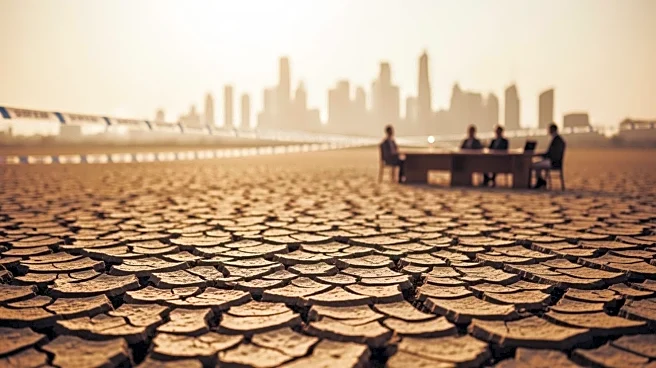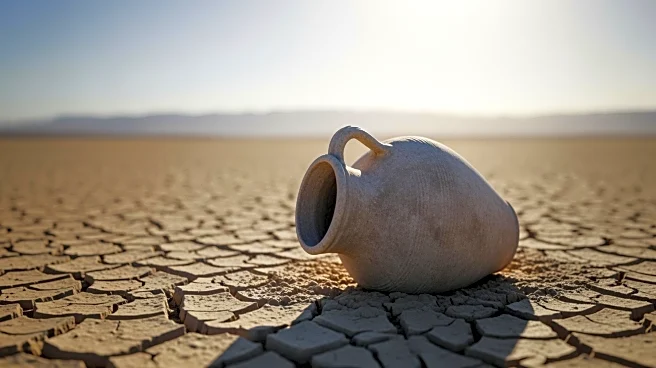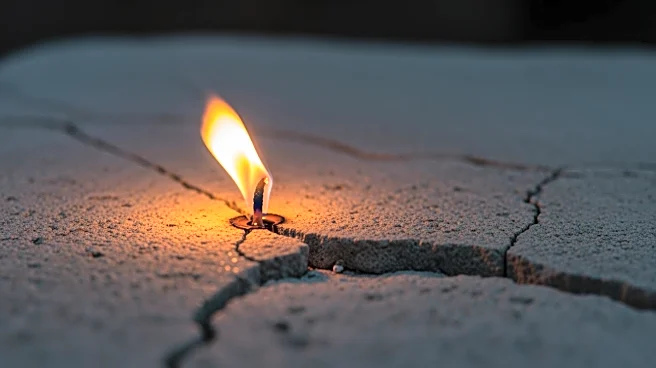What's Happening?
Iran is grappling with a severe water crisis, prompting considerations for evacuating its capital, Tehran. The crisis is attributed to prolonged drought, overconsumption, inefficient agricultural practices,
and mismanagement, including the construction of mega-dams with questionable utility. Analysts describe the situation as 'water bankruptcy,' indicating irreversible damage to the ecosystem and infrastructure. The crisis has led to political unrest, with protests erupting at Tehran's Al-Zahra University and in the southwestern Khuzestan province. The Iranian government is under scrutiny for its handling of the crisis, with citizens expressing frustration over the lack of action despite years of warnings from experts.
Why It's Important?
The water crisis in Iran has significant implications for the country's socio-economic stability and political landscape. Water shortages can exacerbate existing grievances, potentially leading to increased unrest and violence. The crisis highlights the importance of sustainable water management practices and the risks associated with mismanagement and corruption. As Iran faces irreversible environmental damage, the situation serves as a cautionary tale for other nations dealing with similar challenges. The crisis underscores the need for international cooperation and support in addressing global water scarcity issues.
What's Next?
Iran may need to implement drastic measures to address the water crisis, including potential evacuations of major urban areas like Tehran. The government might face increased pressure to reform its water management policies and infrastructure. International organizations and environmental agencies could play a role in providing expertise and resources to help mitigate the crisis. The situation may also prompt broader discussions on climate change adaptation and sustainable resource management in the region.
Beyond the Headlines
The crisis in Iran raises ethical and legal questions about government accountability and the rights of citizens to access essential resources. It also highlights the cultural dimensions of water management, as traditional practices may conflict with modern infrastructure projects. Long-term shifts in population dynamics and urban planning could result from the crisis, influencing Iran's future development strategies.













